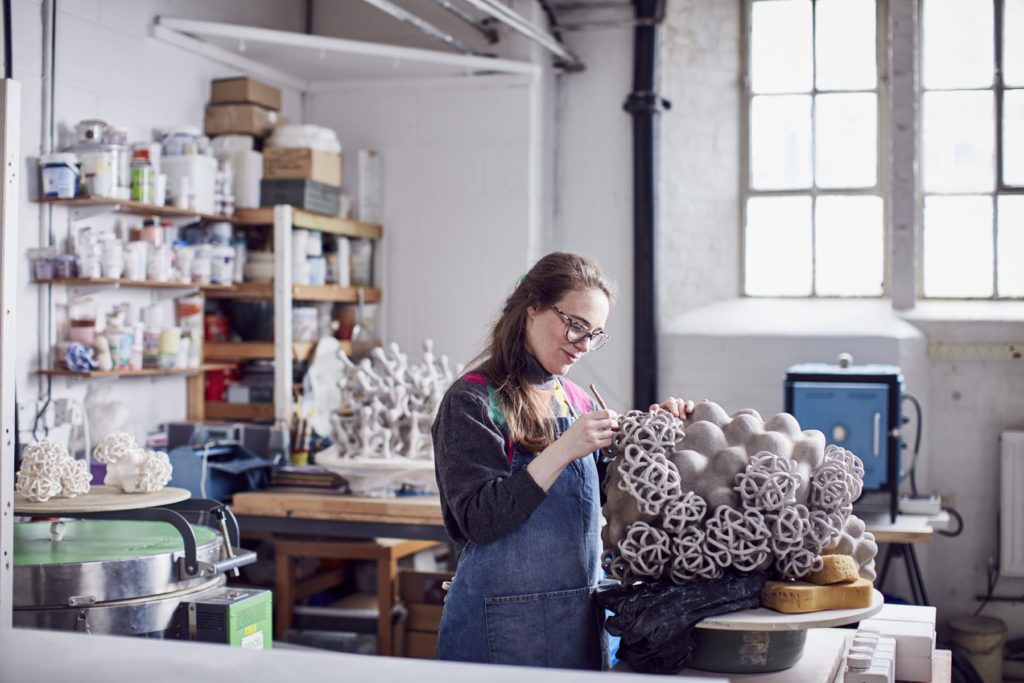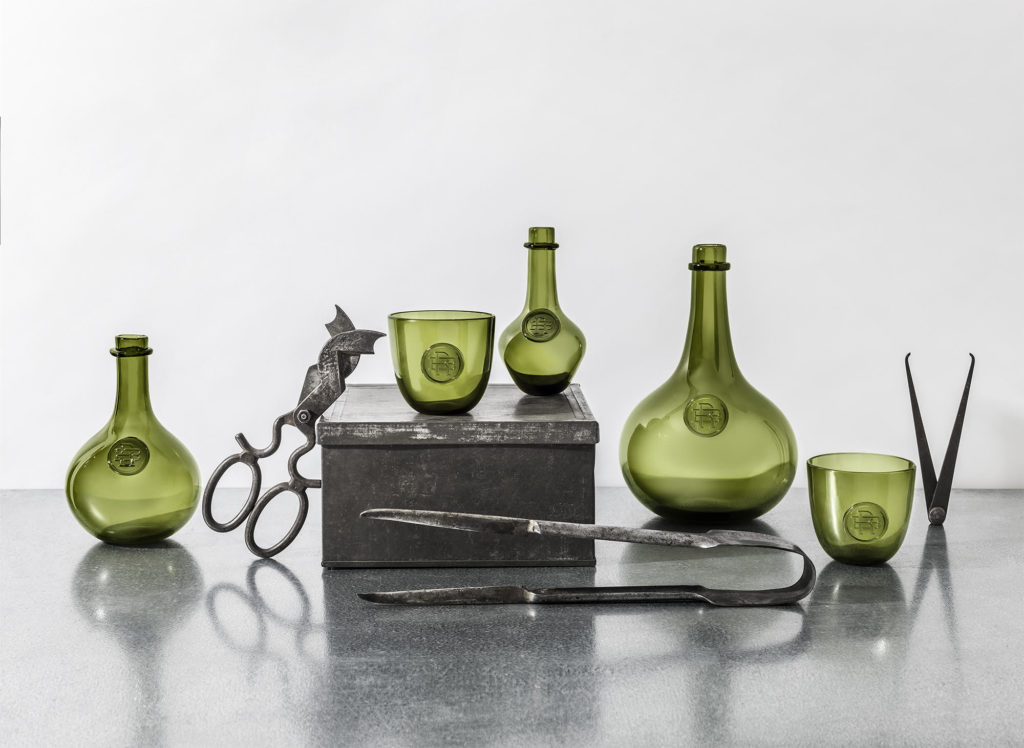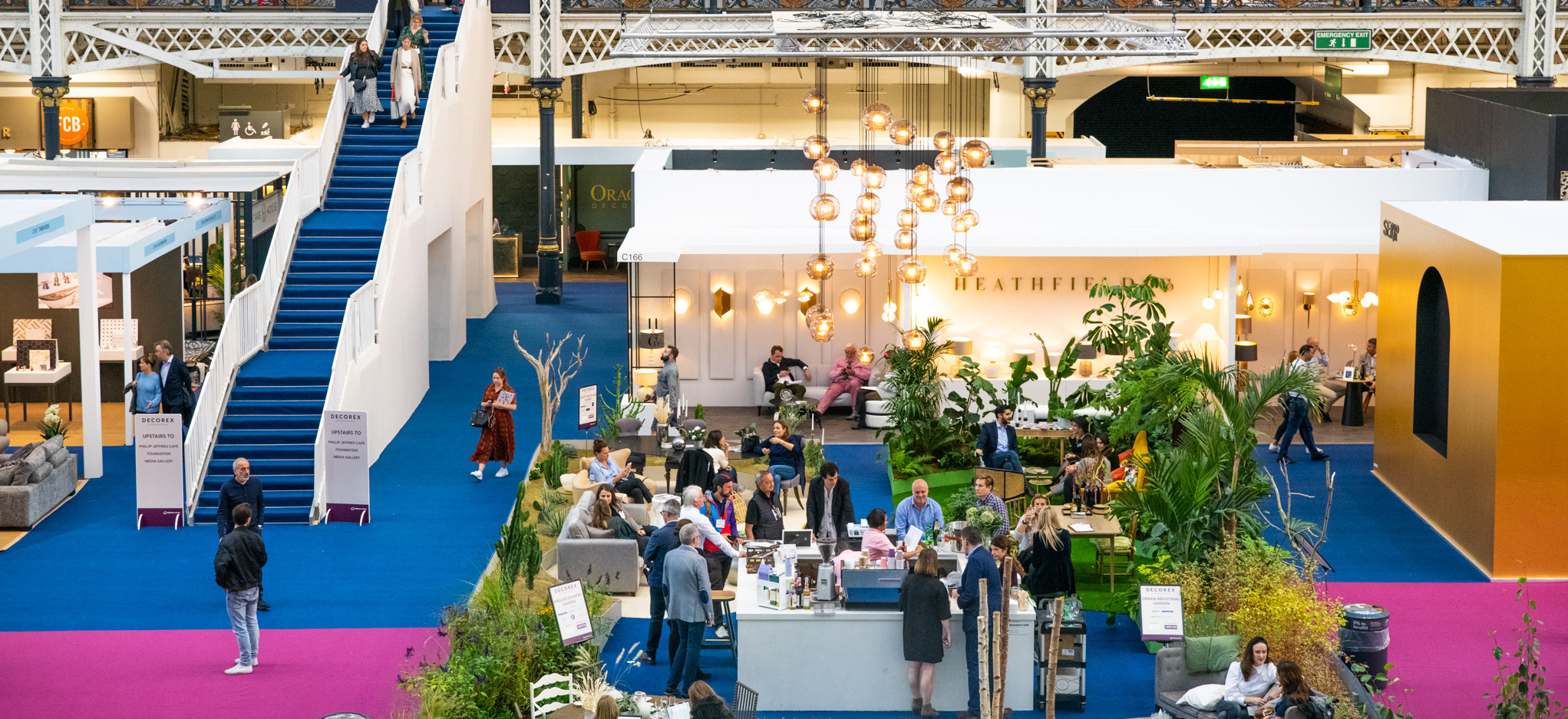As we pick up the design calendar after over a year in lockdown, we look ahead to a variety of upcoming physical events. However, with COVID-19 reshaping the event industry, does a new era beckon for trade exhibitions and fairs such as London Design Festival, Decorex and London Craft Week?
With several brands embracing both a digital and physical schedule, in a new term phrased ‘phygital’, it is interesting to see the shift which has occurred. However, many are looking forward to reconnecting through physical engagement. “We have seen a lot of excitement in the industry for an event, to meet face to face and catch up with friends and peers for the first time in over 18 months,” states Sam Fisher, the Event Director for Decorex as she reveals 2021 registrations are on par with 2019. “Understandably the international attendance will be lower this year, but visitors are eager to see new products and collections and engage with brands to place orders and get business done. We’re expecting a more motivated show floor post-pandemic.”
This optimism is shared by many event organisers with London Craft Week also expecting similar numbers in October to their 2019 figures. “Our programme is bigger this year too with 241 partners and around 383 events throughout the week,” comments Jonathan Burton, Managing Director of the annual event. While London Craft Week is less dependent on international visitors (making up around 13% of previous attendees), it still highlights the desire for physical events to continue. “At the moment only 19 of our partners will be hosting digital-only events,” Burton reveals.

Despite this, digital interaction is here to stay. Not only is it changing the face of the design world, it is also bringing a global industry closer together and at a quicker pace; something that is imperative as we tackle issues such as climate change and social disparity. “While in-person experiences remain key, many are using digital activations to augment their physical activity,” Burton continues. “The key is ensuring persuasive content whatever the channel.”
Design London, the new show replacing the previously known 100% Design as part of London Design Festival, is also reiterating the need for physical interaction. Marlon Marle, the show’s Director, thinks visitors will be delighted to attend one of the first trade fairs in nearly two years. “It allows for valuable networking opportunities and introductions to brands which you can’t always achieve in a digital sense,” he says.
Added to this, some products, such as lighting, are difficult to showcase on a digital scale. The show will feature a lighting specific pop up to allow brands to display the full capabilities and applications of their designs. This includes Artemide who will be showing their new collection Integralis: lights that can be used as room sanitisers as they emit an antiviral ultraviolet light when people are not around, designed for use in hospitals, hotels, and other public spaces. Other highlights include a cinematic experience from Ideal Standard and a Danish Design Pavilion featuring eleven brands curated by the Danish Embassy, all focusing on sustainability and circularity.

London Craft Week offers visitors the chance to engage and witness artisans in action such Richard Brendon
With the physical exhibitions taking necessary precautions in a post-pandemic environment, such as digital badging, wider aisles, and larger stands, the development of corresponding digital platforms is allowing such events to reach audiences all throughout the year, not just on the show dates. “We launched The Edit by Decorex last year, an online platform which houses talks, suppliers and networking opportunities,” explains Fisher. “Each month brings fresh content and Decorex now has the ability to be in action all year round.”
Decorex Virtual also took place last year instead of the physical event but will occur four weeks after this year’s showcase. It will feature all the talks from the live event as well as a 3D walkthrough, great for those who are not able to attend. This hybrid model is something Ben Evans CBE, the London Design Festival Director, feels will play a huge role going forward. “It allows people to experience aspects of the programme virtually if they are unable to travel. This year, we have a number of events that are taking place digitally or supplemented by virtual experiences.” Aspects of the Festival’s Global Design Forum will take place online for all to join alongside innovative commissions such as ‘The Unboxing Show’ by Peter Marigold which will have designs available to download, allowing people to create their own objects from cardboard in their homes.

Aside from the accessibility digital interaction provides, it also presents a more conscious approach to trade events. Minimising the need for temporary sets and reducing the carbon footprint of an international audience could be vital in shifting the industry towards a greener future. While it remains apparent that real-life interaction is necessary, should the emphasis be on local audiences and digital international audiences? Surely, this is an opportunity to focus less on the showcasing of products and discuss forward-thinking solutions for the global crises we face?
As we evaluate the future of design fairs going forward, it’s obvious the art of digital and physical engagement will always be a balancing act. The creation of a ‘phygital’ industry is still very much in early development but it presents a world of exciting opportunities, a chance to re-think the design calendar and reshape the design sector completely. And, with shows such as Design China also developing their digital presence for future events, this global shift is helping business owners to think outside the box and remain adaptable – a key priority in responding to the ever-changing world we live in.
While for now, it might seem these industry events will prioritise their physical installations, this is just the beginning of a shift towards an increased digital presence in the annual design calendar.
Effect Magazine is brought to you by Effetto



